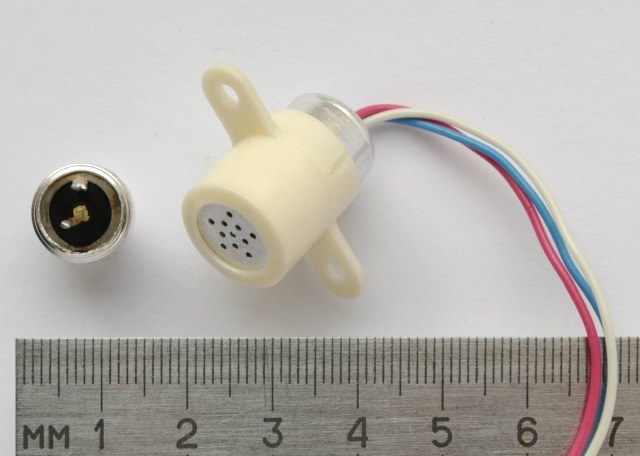Device electret microphones
These MICS are made in the form of capacitors, a certain number of plates which are made from very thin plastic film located on the ring. The film is applied to the electron beam. It penetrates to a shallow depth, creates a spatial charge which has the ability to persist for a long time. These materials are called "electret", so the microphone is called an electret.
Then the film is overlaid with a very thin layer of metal that is used as one of the electrodes. The other electrode is a metal cylinder, a flat surface which is located next to the film. Its fluctuations created by acoustic waves, able to create between the electrodes an electric current. Due to the fact that the current in this case is very small and the output resistance reaches a large magnitude (gigamon), the transmission signal generated by the microphone is quite difficult.
For matching the low resistance of the amplifier and the high impedance of the microphone must use a special cascade, which is created on the field (unipolar) transistor. It is placed in the body of the MIC capsule (the so-called device, which is not only the microphone but also the matching cascade). The body should be metallic, having the ability to isolate the microphone and to negotiate the cascade, making protecting it from external fields of electricity.
In order to understand the suitability for connection to the microphone one or the other amplifier, only connect to the input socket of the device (multimer). If, as a result it will show the voltage of 2-3 Volts, this means that the amplifier is suitable to work with an electret microphone.
The principle of operation and design
According to the principle of electret microphones are the same as the capacitor but the DC voltage in them is ensured by the charge of the electret deposited on the membrane in the form of a thin layer. This charge may persist for a long time (30 years or more)
The work of electret microphones is based on the ability of certain materials which have high dielectric constant, to change their surface charge due to the impact of the sound wave. These microphones have very high impedance, resulting in a possibility of their connection to amplifiers with high input impedance. In its design the microphones are divided into several types, when an electret material in them is at the front position is on a flexible diaphragm and is mounted on the back plate.
